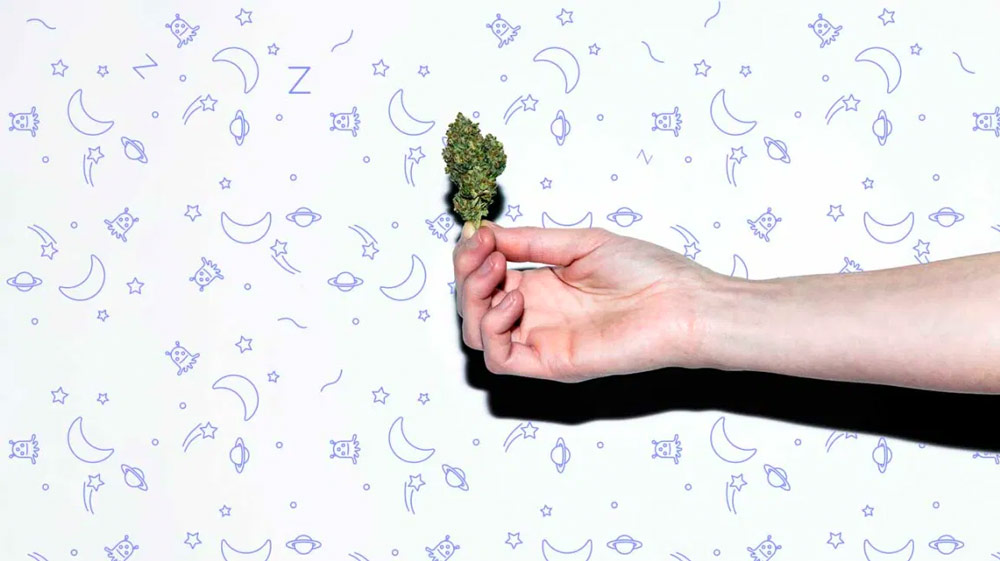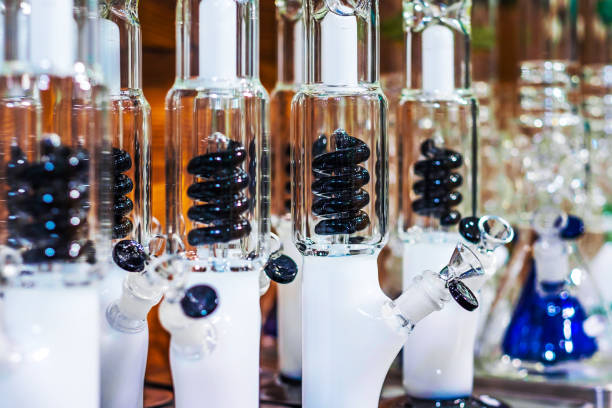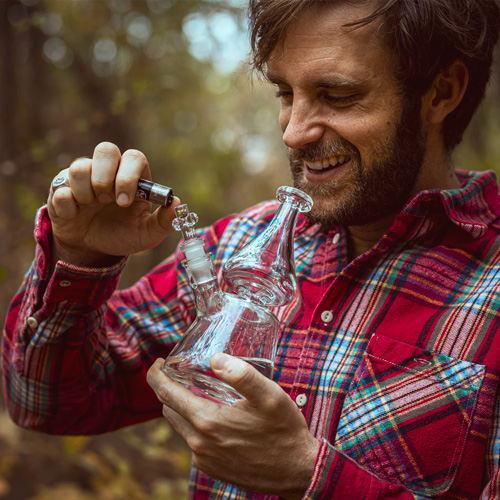Indica vs. sativa: understanding the basics
When cannabis consumers think of “indica” vs. “sativa” marijuana strains, they generally think that indica strains are physically sedating, perfect for relaxing with a movie or as a nightcap before bed, and sativa strains are energizing with uplifting cerebral effects that pair well with physical activity, social gatherings, and creative projects. Hybrid strains are thought to have a mix of indica and sativa effects.
But indica doesn’t always mean “in da couch,” and sativa doesn’t necessarily energize all of its consumers. As research opens up and we learn more about the cannabis plant, it turns out the chemical compounds in each strain—the cannabinoids and terpenes in it—determine the effects you’ll feel, not whether it’s an indica or sativa. In fact, the origins of those two terms are rooted in botany, not effects.
However, even today, the belief that indicas, sativas, and hybrids deliver distinct effects is still deeply rooted in mainstream cannabis culture. If you’ve ever been to a dispensary, you’ve likely heard a budtender begin a strain recommendation by asking which of those three types you prefer.
Let’s look at where the terms “indica,” “sativa,” and “hybrid” actually come from, and how a cannabis strain’s chemical profile interacts with your unique body to make you feel effects.
Origin of ‘indica’ and ‘sativa’
The words “indica” and “sativa” were introduced in the 18th century to describe different species of cannabis: Cannabis sativa and Cannabis indica. The term “sativa” described hemp plants found in Europe and western Eurasia, where it was cultivated for its fiber and seeds. Cannabis indica refers to the intoxicating varieties discovered in India, where it was harvested for its seeds, fiber, and hashish production.
Here’s how terms have shifted since their earliest botanical definitions:
- Today, “sativa” refers to tall, narrow-leaf varieties of cannabis, thought to induce energizing effects. However, these narrow-leaf drug (NLD) varieties were originally Cannabis indica ssp. indica.
- “Indica” has come to describe stout, broad-leaf plants, thought to deliver sedating effects. These broad-leaf drug (BLD) varieties are technically Cannabis indica ssp. afghanica.
- What we call “hemp” refers to the industrial, non-intoxicating varieties harvested primarily for fiber, seeds, and CBD. However, this was originally named Cannabis sativa.
Although the cannabis varieties we consume largely stem from Cannabis indica, both terms are used—even if erroneously—to organize the thousands of strains circulating the market today.
What impacts strain effects?
So if indica and sativa aren’t the best predictors of effects, what is?
The effects of different strains of weed depend on a number of different factors, but mainly on the cannabinoids and terpenes in the strain, or the chemical compounds in it.
Cannabinoids
The cannabis plant is composed of hundreds of chemical compounds that create a unique harmony of effects, which is primarily led by cannabinoids. THC and CBD are the two most common cannabinoids and are the main drivers of cannabis’ therapeutic and recreational effects.
- THC (Δ9-tetrahydrocannabinol) makes us feel hungry and high, and relieves symptoms like pain and nausea.
- CBD (cannabidiol) is a non-intoxicating compound known to alleviate anxiety, pain, inflammation, and many other medical ailments.
RelatedA list of major cannabinoids in cannabis and their effects
Cannabis contains dozens of different cannabinoids but start by familiarizing yourself with THC and CBD first. Instead of choosing a strain based on its indica or sativa classification, consider basing your selection on these three buckets instead (both indica and Sativa strains exhibit these different cannabinoid profiles):
- THC-dominant strains are primarily chosen by consumers seeking a potent euphoric experience. These strains are also selected by patients treating pain, depression, anxiety, insomnia, and more. If you tend to feel anxious with THC-dominant strains or dislike other side affects associated with THC, try a strain with higher levels of CBD.
- CBD-dominant strains contain only small amounts of THC and are widely used by those highly sensitive to THC or patients needed clear-headed symptom relief.
- Balanced THC/CBD strains contain similar levels of THC and CBD, offering mild euphoria alongside symptom relief. These tend to be a good choice for novice consumers seeking an introduction to cannabis signature high.
Terpenes
If you’ve ever used aromatherapy to relax or invigorate your mind and body, you understand the basics of terpenes. Terpenes are aromatic compounds commonly produced by plants and fruit. They can be found in lavender flowers, oranges, hops, pepper, and of course, cannabis. Secreted by the same glands that ooze THC and CBD, terpenes are what make cannabis smell like berries, citrus, pine, fuel, etc.
One question yet to be answered by research is how terpenes—and different combinations of those terpenes – shape the effects of different cannabis strains.
There are many types of terpenes found in cannabis, and it’s worth familiarizing yourself with the most most common—especially myrcene, caryophyllene, limonene, and terpinolene since they’re the most likely to occur in pronounced levels in cannabis.

Biology, dosing and consumption method of cannabis
Additionally, your tolerance to cannabis, the amount you consume (dosage), and the consumption method will also determine how a strain affects you. Consider the following questions when looking for the right strain or product.
- How much experience do you have with cannabis? If your tolerance is low, consider a low-THC strain in low doses.
- Are you susceptible to anxiety or other side effects of THC? If so, try a strain high in CBD.
- Do you want the effects to last a long time? If you do, consider edibles (starting with a low dose). Conversely, if you seek a short-term experience, use inhalation methods or a tincture.
There are many factors to consider when choosing a strain, but if you find that indica strains consistently deliver a positive experience, then by all means, stick to what you know. However, if you’re still searching for that ideal strain, these are important details to keep in mind.
What is sativa?
While not all sativa marijuana strains will energize you, most consumers notice a tendency for sativas to produce a “head high,” an uplifting, stimulating effect. They also often report sativas as being helpful in mitigating stress or anxiety, and many consumers enjoy sativas to sharpen focus and boost creativity/motivation.
Sativa effects
Common effects associated with sativa strains include feeling happy, uplifting, euphoric, and energetic. Sativas are often thought of as “daytime” strains, used for feeling productive, creative, and focused, and for getting chores done.
Popular sativa strains
There are many sativa strains to try, and you’ve likely heard of some of the most popular. Most dispensaries should stock at least some of these sativa weed strains as they’re generally a crowd-favorite.
- Sour Diesel
- Jack Herer
- Green Crack
- Durban Poison
- Strawberry Cough
- Amnesia Haze
- Super Lemon Haze
- Super Silver Haze
What is indica?
Not all indica strains will put you “in da couch,” but nevertheless, many consumers associate indicas with full-body effects, for example, heavy limbs or a tingly face. They also report indicas as being helpful in aiding relaxation and curbing insomnia.
Indica effects
Common effects associated with indica strains include feeling relaxed, euphoric, happy, and sleepy. Indicas are commonly known as “nighttime” strains, used for relaxing and unwinding at the end of the night.
Popular indica strains
There are many indica strains to try, many of which you may be familiar. Check your local dispensary for these popular indica weed strains.
- Purple Punch
- Granddaddy Purple
- White Rhino
- Bubba Kush
- Northern Lights
- Blueberry
- Grape Ape
- Blue Cheese
What are hybrids?
Hybrid strains are bred from both indica- and sativa-descended plants. Due to the long history of crossbreeding cannabis strains—much of it was historically done underground to evade authorities—strains that have pure indica or pure sativa lineages are rare. Most strains referred to as “indica” or “sativa” are, in fact, hybrids, with genetics inherited from both subspecies.
Hybrid effects
Since hybrid weed strains derive genetics from indicas and sativas, their ensuing effects can also pull from both indica and sativa strains. Common effects include happy, euphoric, uplifting, energetic, relaxing—it all depends on which hybrid you consume and what effects its “parent” strains are known to produce.
Looking at a hybrid’s lineage (its parent strains) may give you a better sense of what kind of effects it will produce; for example, if it has more indica in its lineage, it might have effects more associated with those strains.
Popular hybrid strains
There’s certainly no shortage of hybrid strains on the market, and some of the most popular you’ll come across are also among the most iconic.
- GG4
- Blue Dream
- Gelato
- Wedding Cake
- GSC
- OG Kush
- White Widow
- Pineapple Express
How to choose a strain
Choosing the right cannabis product or strain for you can seem intimidating, but if you keep the following suggestions in mind, you should be able to find something that works for you:
- Shopping for a specific mood or effect? Start there. If you’re hoping for a specific experience (like you want to relax and watch a movie) or if you’re looking to treat something like insomnia or nausea, use the corresponding filters on Leafly or let your budtender know so he or she can narrow down their recommendations.
- Don’t lead with “I want an indica/sativa” or “I don’t want an indica/sativa.” Remember that not all indicas are sleepy or heavy, and not all sativas are energetic and uplifting. For example, if you’re prone to anxiety and want to avoid an uncomfortable, racy experience, if you tell a budtender you hate sativas because they make you anxious, they may hand you a THC powerhouse like White Fire OG simply because it’s not a sativa. Meanwhile, a “sativa” like Harlequin—with low levels of THC and high levels of CBD—might actually be a better fit. Revert back to our first point and start with the mood or effect you’re either trying to achieve or want to avoid. You may end up with a surprisingly great fit, regardless of whether it’s an indica or sativa!
- Be mindful of your tolerance when it comes to strain potency. Due to advancements in growing and cross-breeding, today’s strains can be a real THC powerhouse. Many popular strains available at your local dispensary are quite potent, and if your tolerance levels aren’t accustomed to high THC levels, you may have a negative, uncomfortable experience consuming them. A strain packing 25% THC might not be as enjoyable to you as one tapping in at 16%, or the balanced THC/CBD variety that provides 10% of each cannabinoid. There’s no shame in opting for a lower THC percentage—you’re trying to find the right level for you and your ideal experience.
- Keep track of what you like and don’t like to explore (or avoid) similar strains. While trying new strains, you may discover that you tend to like strains that express similar terpene profiles. For example, if you like the terpinolene-dominant Jack Herer, you’ll likely enjoy Golden Pineapple or XJ-13, which are also terpinolene-dominant. Likewise, if you picked up Gelato and aren’t vibing with its humulene-dominant terp profile, you might want to steer clear of similar strains like Sherbert and GSC.
- Talk to your healthcare provider. If you have any existing medical conditions or are currently taking medication, you should talk to your doctor or a medical professional before trying cannabis. They may have suggestions or recommendations for you that complement your existing medical/health regimen.
Popular strains by strain type and effect
| Strain Name | Strain Type | THC | CBD | Helps with |
|---|---|---|---|---|
| Sour Diesel | sativa | 18% | less than 1% | creativity, depression, anxiety |
| Green Crack | sativa | 17% | less than 1% | energy, stress, euphoria |
| Lemon Haze | sativa | 18% | less than 1% | happiness, fatigue, pain |
| Charlotte’s Web | sativa | less than 1% | 13% | pain, stress, anxiety |
| Candyland | sativa | 18% | less than 1% | socializing, relaxation, energy |
| Purple Punch | indica | 19% | less than 1% | relaxation, stress, euphoria |
| Pennywise | indica | 8% | 8% | relaxation, anxiety, pain |
| Northern Lights | indica | 16% | less than 1% | stress, pain, anxiety |
| GMO Cookies | indica | 25% | less than 1% | pain, insomnia, relaxation |
| Bubba Kush | indica | 17% | less than 1% | appetite, pain, insomnia |
| GG4 | hybrid | 20% | less than 1% | relaxation, happiness, stress |
| Sour Tsunami | hybrid | less than 1% | 12% | pain, stress, anxiety |
| Sherbert | hybrid | 18% | less than 1% | happiness, creativity, relaxation |
| Cannatonic | hybrid | 5% | 10% | pain, focus, stress |
| Blue Dream | hybrid | 18% | less than 1% | relaxation, euphoria, happiness |
Indica vs. sativa FAQs
Although there are plenty of resources for learning about the differences between cannabis types, sometimes you just want to know the basics. Below are answers to some common questions about indica and sativa marijuana.
Is there really a difference between indica and sativa?
There is no difference in the effects of indica and sativa.
What is sativa used to treat?
Sativa strains used for medicinal purposes are believed to treat conditions related to depression, anxiety and pain. *
Does sativa give you energy?
While there is no scientific evidence that sativas give you energy, they are believed to be uplifting and euphoric.
Does sativa give you a body high?
Sativa may provide a cerebral head and body high, although more research is needed on this topic.
Does sativa give you the munchies?
Sativa strains may help stimulate your appetite and give you the munchies, but it depends on your body chemistry.
Will sativa keep you up at night?
Smoking sativa likely won’t keep you up at night like drinking a coffee late in the day would.
What is indica used to treat?
Indica strains used for medicinal purposes are believed to treat conditions related to insomnia, anxiety and inflammation.*
Does indica make you sleepy?
In general, indicas tend to be relaxing which can make people feel sleepy.
Does indica give you a body high?
Some indica strains are known for delivering heavy body highs.
Will indica make me feel paranoid?
If you’re prone to anxiety or paranoia while sober, indica strains may make your paranoia worse.
Will indica turn my eyes red?
There is no guarantee indica will or will not turn your eyes red.






